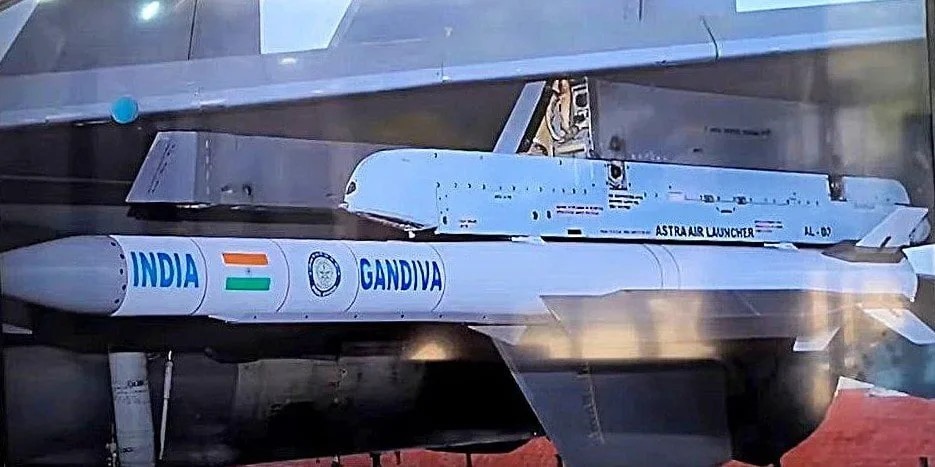India’s Astra MK-III Missile Renamed Gandiva: A Boost to Aerial Warfare
Why in the News?
The Astra MK-III air-to-air missile has been renamed Gandiva by DRDO, enhancing India’s aerial warfare capabilities with extended range and advanced technology for superior combat effectiveness.
About Gandiva Missile:
- India’s advanced air-to-air missile, Astra MK-III, has been renamed Gandiva, inspired by Arjuna’s legendary bow from the Mahabharata.
- Developed by the Defence Research and Development Organisation (DRDO), the missile is a Beyond-Visual-Range (BVR)
- It aims to enhance the Indian Air Force’s (IAF) combat capabilities
Key Features and Capabilities
- Platform Compatibility: Designed for Sukhoi Su-30MKI and Tejas fighter jets.
- Operational Range: Can engage aerial threats at distances of up to 340 kilometers.
- Target Capabilities: Effective against fighter jets, bombers, military transport aircraft, refueling planes, and AWACS.
- Engine and Speed: Powered by a dual-fuel ducted ramjet engine, enabling engagements at speeds between Mach 2.0 and 3.6.
- Altitude Adaptability: Can be launched from sea level up to 20 km, ensuring high-speed engagements across various altitudes.
- Advanced Maneuverability: Designed to counter enemy aircraft at sharp angles and varying altitudes.
Strategic Significance
- With its long-range BVR capabilities, Gandiva will place India among an elite group of nations with such advanced missile technology.
- The missile will enhance India’s air superiority and defense capabilities, strengthening deterrence against aerial threats.
- Its induction into the IAF will be a game-changer in modern aerial warfare, bolstering India’s national security and strategic edge.




